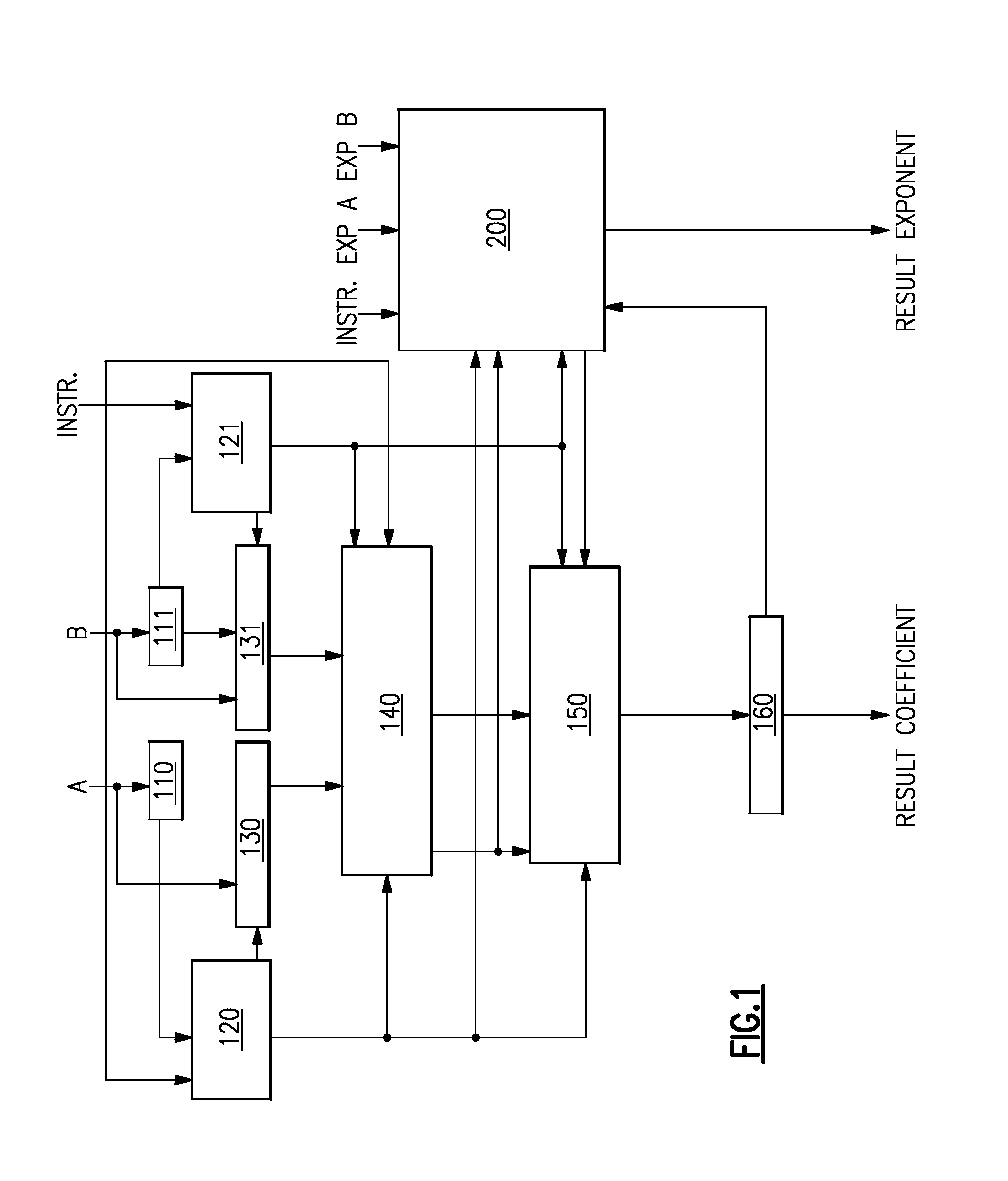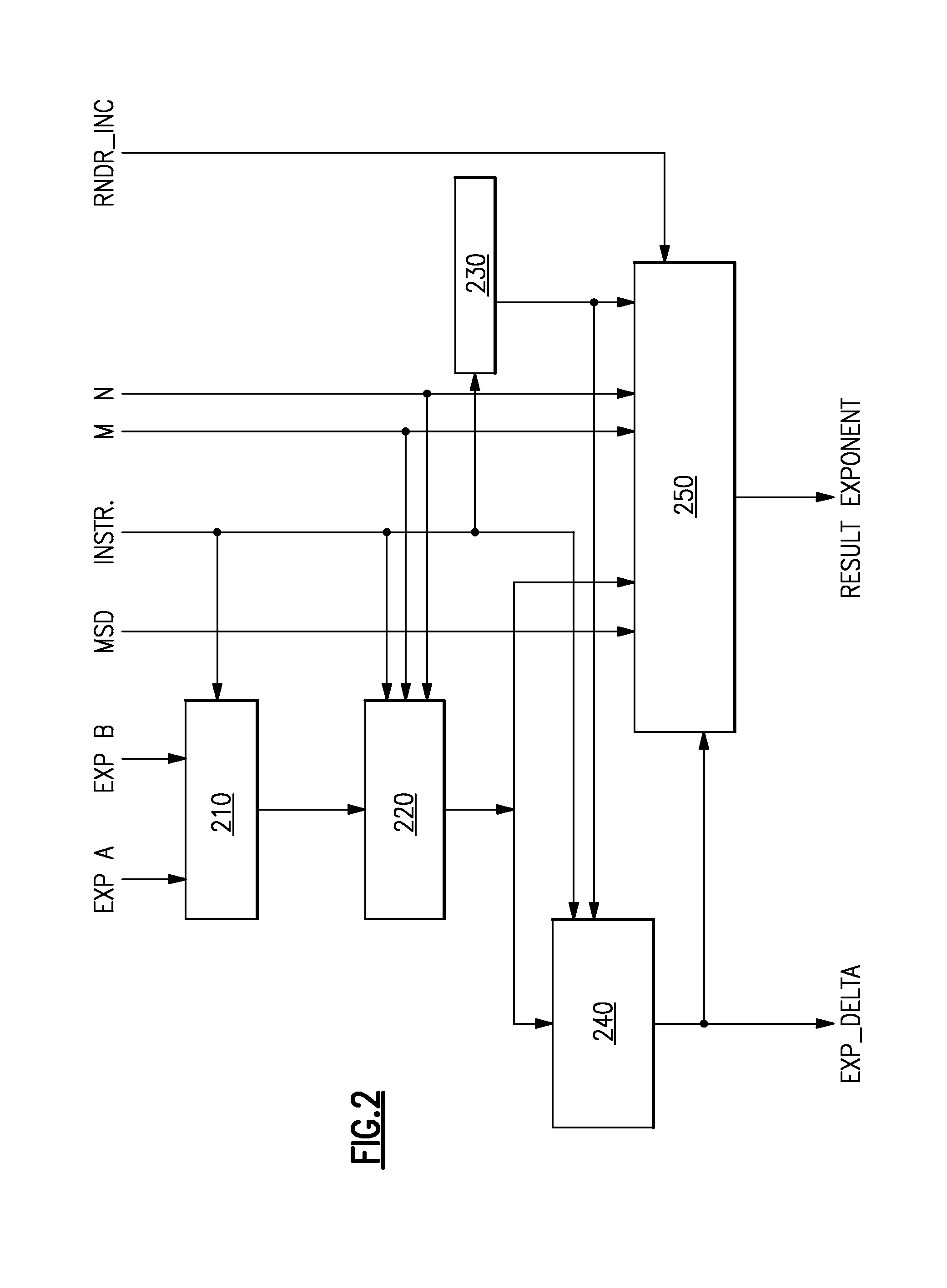Decimal Floating Point Mechanism and Process of Multiplication without Resultant Leading Zero Detection
a floating point mechanism and decimal technology, applied in the field of decimal multiplication mechanism for fixed and floating point mechanism, can solve the problems of maintaining unnecessary least significant digits, and achieve the effects of less logic, less error prone, and simplified and reduced cycle number
- Summary
- Abstract
- Description
- Claims
- Application Information
AI Technical Summary
Benefits of technology
Problems solved by technology
Method used
Image
Examples
Embodiment Construction
[0014]Turning now to the exemplary embodiment in greater detail, it will be seen that this invention deals with the described process useful for decimal multiplication for fixed and floating point processors which assumes that the final product will be M+N digits in length and performs all calculations based on this assumption. Least significant digits that would be truncated are no longer stored, but retained as sticky information which is used to finalize the result product. Once the computation of the product is complete, a final check based on the examination of key bits observed during partial product accumulation is used to determine if the final product is truly M+N digits in length, or M+N−1 digits. If the latter is true, then corrective one digit shifting is employed to obtain the proper result. This eliminates the need for dedicated leading zero detection hardware used to determine the number of significant digits in the final product.
[0015]The coefficient dataflow system ...
PUM
 Login to View More
Login to View More Abstract
Description
Claims
Application Information
 Login to View More
Login to View More - R&D
- Intellectual Property
- Life Sciences
- Materials
- Tech Scout
- Unparalleled Data Quality
- Higher Quality Content
- 60% Fewer Hallucinations
Browse by: Latest US Patents, China's latest patents, Technical Efficacy Thesaurus, Application Domain, Technology Topic, Popular Technical Reports.
© 2025 PatSnap. All rights reserved.Legal|Privacy policy|Modern Slavery Act Transparency Statement|Sitemap|About US| Contact US: help@patsnap.com



